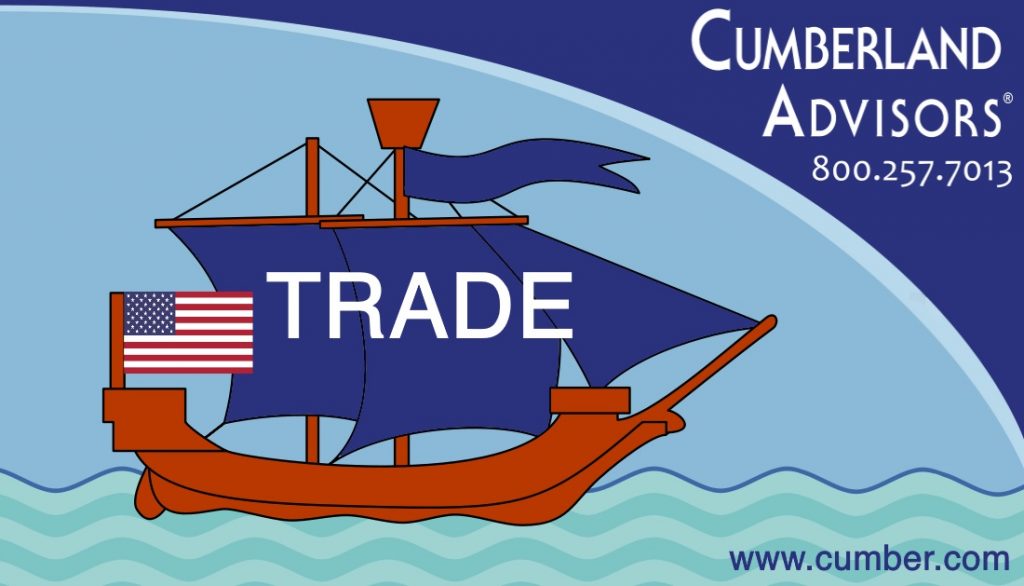We constantly get email defending the Trump-Navarro Trade War policy. The critics outnumber the defenders, but we can observe that both sides of this debate are digging in their heels.
We also get counterarguments that ask why we should permit China to steal our intellectual property. Simple answer is, we shouldn’t let any country or business or individual steal. Theft deserves punishment.
Our point is the Trump Trade War took the issue of tariffs and made it less targeted and more macro. In doing so POTUS introduced confusing elements. Example: What do soybeans have in common with algorithms? Or why put a tariff on a washing machine and invite a counter-tariff on an exported Maine lobster?
We also note that there is a time lag as tariff rhetoric segues to tariff threat to tariff notice period to actual imposition to resulting price changes. The full period of this process is about a year. So higher prices for US consumers today had their genesis almost a year ago.
Here is an example from Bloomberg that applies to consumers: “$1 Billion a Month: The Cost of Trump’s Tariffs on Technology” (https://www.bloomberg.com/news/articles/2018-12-14/-1-billion-a-month-the-cost-of-trump-s-tariffs-on-technology). Readers may note the timing depicted in the chart. And perhaps reader critics will appreciate how tariffs levied on China are really a sales and use tax on Americans.
China is realizing that their retaliation with tariffs is having an internal negative effect. Chinese policy is now changing because growth is slowing in China and credit-cycle pressure is rising.
Will Trump-Navarro Trade War team members realize that the US is also experiencing pressure and alter policy to take advantage of the present opportunity for negotiation? We shall soon know.
I really don’t care whether Trump declares himself brilliant and victorious in his Trade War. I really don’t care about the inner workings of Xi and his government. But their respective political self interests could make for a trade truce deal, and I do care about that.
I care about resumption of growth and global exchanges that create more investment and opportunities for entrepreneurs, as well as lower risk of war. It takes statesmen to lead and reach agreement. We will soon know if we have them in Beijing and Washington.
Meanwhile, markets wait, investors wait, business waits, employees wait, credit market agents wait. All have their patience tested in China and in the US and in the rest of world, as tariff-induced inflation pressures and growth-impairment pressures continue to build.
We expect a truce deal. If we’re wrong, the performance of our equity portfolios will suffer. If we’re right, the performance of our equity portfolios will perform well, with good reasons for doing so. The arguable trading range on this outcome is 2400 low on S&P 500 on bad outcomes and 3300–3400 on good outcomes. We think the odds favor the upside, with a time horizon of 12–18 months. We see $172–175 in 2019 earnings for the S&P. We see $180–182 for 2020. Those figures assume that a truce or at least some improvement in the US-China Trade War is coming.


